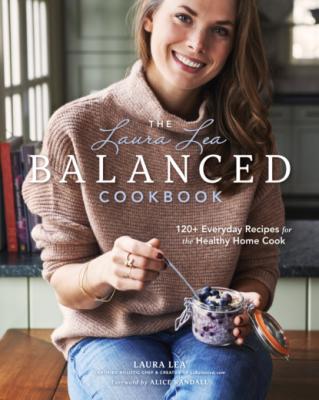The Laura Lea Balanced Cookbook. Laura Lea
Читать онлайн.| Название | The Laura Lea Balanced Cookbook |
|---|---|
| Автор произведения | Laura Lea |
| Жанр | Кулинария |
| Серия | Laura Lea Balanced |
| Издательство | Кулинария |
| Год выпуска | 0 |
| isbn | 9781951217112 |
with your entree and encourage family members
to fill up on those first. If you can ditch the notion
of meat as the main event, it will save you some
serious bucks in overall quantity consumed.
continued on next page
continued from previous page
Meatless Monday. And while you’re at it, have a
meatless night or two every week, and try one of
my absolutely delicious vegetarian dishes. Beans,
grains, and tempeh are quite affordable, and I
promise with the right cooking techniques and
flavoring, you’ll love them.
Make friends with leftovers. See my section on
leftovers (page 54). This can save some major cash, it helps decrease waste, and it forces you to use your imagination (or your keypad and Google, whichever the case may be).
SPICES
I recommend replenishing your spices every
6 months. If you get rid of spices you don’t use,
and only stock the ones you do, this will be
easy—you might even run out before then.
• Ground cinnamon
• Ground paprika
• Ground sweet smoked paprika
• Turmeric powder*
• Chili powder
• Garlic powder
• Onion powder
• Ground cumin
• Curry powder
• Ground ginger
• Ground cayenne pepper
• Sea salt
• Black pepper: For adding to a dish that will
be cooked (soups, casseroles, sautés), use
pre-ground. For garnishing an already-
prepared meal, use a pepper grinder.
• Oregano
• Basil
• Tarragon
• Rosemary
• Red pepper flakes
GRAINS (ORGANIC
RECOMMENDED)
• Quinoa: Quinoa is technically a seed, not
a grain. However, it has a similar nutrient
profile and is prepared/eaten similarly to
grains, so I’m designating it to this category.
Quinoa is high in plant protein, and it is
considered a “complete” protein. “Complete”
proteins contain all nine essential amino
acids that our body cannot produce and thus
must obtain from food. There are very few
plant-based “complete” proteins, and quinoa
is one. Quinoa is also loaded with vitamins,
minerals, and fiber, and it is gluten-free,
making it a superstar in the health-food
world. Before cooking quinoa, it is crucial to
rinse the “grains” thoroughly, as they contain
a bitter protective coating called saponin.
• White rice: My husband and I much prefer
the flavor and texture of white rice to
brown. Although brown rice, when properly
prepared, contains more nutrients, we get
so much nutrition from other foods that we
don’t worry about this. However, white rice
can be a problem for those with diabetes or
blood sugar issues. Quinoa, alone or mixed
with brown rice, is a great alternative in those
cases. Also, we always pair white rice with a
fat or a protein, so it doesn’t spike blood sugar
the way it would if eaten alone. Absolutely
feel free to use whatever grain you prefer.
note: When I mention white rice in recipes,
I am referring to long-grain rice, not short-
grain rice. Long-grain rice cooks up fluffy and
separate, whereas short-grain rice tends to
clump and stick.
• Rolled oats: Oats—one of the inspirations of
this book! You will see oats throughout this
book in various applications, and that is for a
few reasons. Oats are affordable, available at
every grocery store, and they are extremely
versatile with their mild, barely sweet
flavor. Ground up, they can substitute 1:1 for
wheat flour; they make a great binder, are a
breakfast staple, and they can be used whole
in bars, granola, or dessert toppings. On
the health front, I much prefer homemade
oat flour to wheat, as it is gluten-free and
minimally processed. There are different
types of oats. All oat variations start at oat
groats, which are then processed to create
three main oat categories. Steel-cut oats
are simply groats that have been cut into
chunky pieces, and they take quite some
time to cook. Rolled oats are groats that have
been steamed and flattened, which makes
them more pliable and quicker-cooking.
Instant oats have been further processed
and flattened, and they lose texture/become
mushy when cooked. Feel free to experiment
with all three, but be sure to choose rolled
oats for the recipes in this book.
note: Make sure your oats have “Certified
GF/Gluten-Free” on the packaging if that
is a concern.
• Wild rice: Wild rice is actually the seed of
a long-grain aquatic grass. It has a nutty,
chewy flavor that pairs beautifully with nuts
and fresh or dried fruit. It has significantly
more fiber and protein than brown rice, as
well as B vitamins and a host of minerals.
Wild rice is
